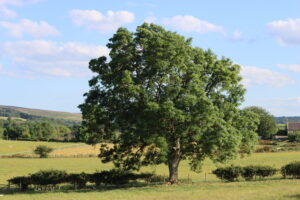Climate change is disrupting the rhythms of spring river flooding across Europe which could consequently pose new problems for biodiversity and food security.
Researchers from the University of Glasgow, Scotland and Umeå University, Sweden analysed data that has been collected since the 1960s on flood peaks and daily temperatures across Europe.
The report, published in the journal of Geophysical Research Letters shows that the thermal growing season, which is the period where temperatures rise consistently above 5°C has been occurring consistently earlier in the year which means that the period where the highest water levels occur happens later.
This is the first research to demonstrate an overlap between the beginning of spring and seasonal flooding.
Dr. Thorsten Balke, lead author of the paper and professor at the University of Glasgow’s School of Geographical and Earth Sciences said: ‘Previous research has shown that climate-change-driven mismatches between the changing of the seasons and the biorhythms of wildlife is having a direct impact on ecosystems across Europe.’
‘We set out to answer whether a similar crossover was happening with seasonal floods, and the answer is yes.’
‘The changes we’re seeing are actually quite drastic – there is a clear pattern of flooding occurring more regularly in the growing season. This raises a lot of questions about the effect that this might be having on the European landscape.’
‘Now that floods are happening more regularly, the waters are encountering more vegetation like seedlings and larger trees and are carrying them downstream.’
‘This not only strips away potential food sources for local wildlife but it also affects how the flood moves. It could make the flood move more slowly so that it affects areas of land which weren’t flooded in previous years.’
Dr. Balke concluded: ‘This could have serious knock-on effects for farming, or to property damage within the floodplain, it could also change the shape of the rivers themselves.’
The researchers plan to continue monitoring the effects of climate change on flooding across Europe, with further direct field studies underway to collect additional data.
In related news, parts of northern Britain have experienced some of the most severe floods in Europe, and it’s down to climate change.
Photo Credit – Pixabay
















